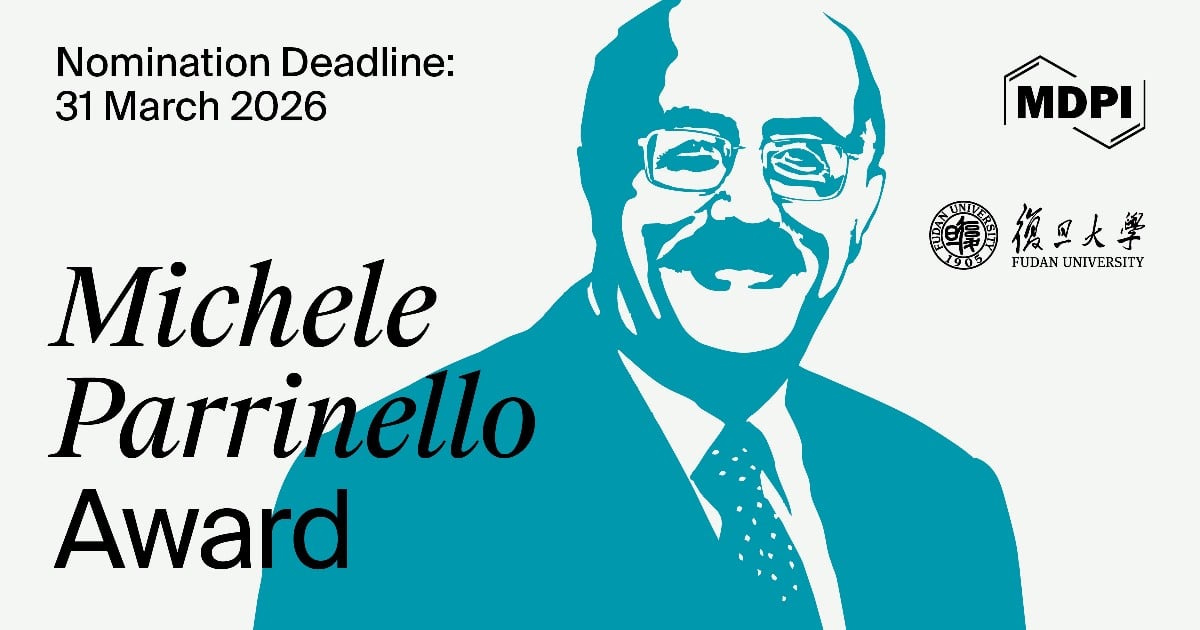Journal Description
Genealogy
Genealogy
is an international, scholarly, peer-reviewed, open access journal devoted to the analysis of genealogical narratives (with applications for family, race/ethnic, gender, migration and science studies) and scholarship that uses genealogical theory and methodologies to examine historical processes. The journal is published quarterly online by MDPI.
- Open Access— free for readers, with article processing charges (APC) paid by authors or their institutions.
- High Visibility: indexed within Scopus, ESCI (Web of Science), and many other databases.
- Rapid Publication: manuscripts are peer-reviewed and a first decision is provided to authors approximately 26.3 days after submission; acceptance to publication is undertaken in 4.7 days (median values for papers published in this journal in the first half of 2025).
- Recognition of Reviewers: reviewers who provide timely, thorough peer-review reports receive vouchers entitling them to a discount on the APC of their next publication in any MDPI journal, in appreciation of the work done.
Impact Factor:
0.6 (2024);
5-Year Impact Factor:
1.0 (2024)
Latest Articles
Introduction: Seeing Ethnicity Otherwise
Genealogy 2025, 9(4), 153; https://doi.org/10.3390/genealogy9040153 - 17 Dec 2025
Abstract
We are very pleased to publish this commemorative Special Issue, dedicated to the life and work of Peter J [...]
Full article
(This article belongs to the Special Issue Seeing Ethnicity Otherwise: From History, Classification and Terminology to Identities, Health and Mixedness in the Work of Peter J. Aspinall)
Open AccessArticle
Resurrecting Pharaohs: Western Imaginations and Contemporary Racial-National Identity in Egyptian Tourism
by
Zaina Shams
Genealogy 2025, 9(4), 152; https://doi.org/10.3390/genealogy9040152 - 12 Dec 2025
Abstract
This paper explores racialization as a historical-sociological concept and an ongoing, contemporary material praxis, using a Global Critical Race and Racism (GCRR) framework. Racialization is an ideological and material practice of colonial conquest that requires constant reification and maintenance. This paper examines how
[...] Read more.
This paper explores racialization as a historical-sociological concept and an ongoing, contemporary material praxis, using a Global Critical Race and Racism (GCRR) framework. Racialization is an ideological and material practice of colonial conquest that requires constant reification and maintenance. This paper examines how racialization and racial practices are positioned within Egyptian state tourism campaigns, through a media content and discourse analysis, as a function of contemporary national-racial identity formation. Histories of colonial archaeology, race science, and the European colonial domination and imagination of Egypt heavily contextualize this analysis. First, the paper outlines how the identity of ancient Egyptians was a racing project fundamental to white supremacy and global race and racism in the eighteenth and nineteenth centuries in ways that are intricately tied to contemporary nationalism, national identity formation, and nation-building in modern Egypt. The focus of this paper is Egypt’s agency in its national identity formation practices, wherein it acknowledges, negotiates, and markets aspects of its racialization that are economically and geopolitically advantageous, specifically within the tourism industry and in relation to Pharaonic Egypt. In this way, Egypt’s racialization is not simply externally imposed; the Egyptian state is engaging with global structures of race and racism by maintaining racial mythologies for Western imaginaries. Egypt’s contemporary national identity formation includes an engagement with its past that negotiates its position within a global hierarchy of nations across the racial-modern world system. This study explores notions of autonomy, acquiescence, and resistance under racialization by examining how nation-states engage with, resist, or leverage racialization.
Full article
(This article belongs to the Special Issue Global Racialization, Class and the Politics of Nation: Tensions and Articulations in the Twenty-First Century)
►▼
Show Figures

Figure 1
Open AccessArticle
Szwarc, Schwarzenberg or Czerny? Heraldic Memory of the Polish Nobility from the Middle Ages to the Present: The Case of the Czerny Family
by
Joanna Brzegowy
Genealogy 2025, 9(4), 151; https://doi.org/10.3390/genealogy9040151 - 11 Dec 2025
Abstract
This article examines the evolution of heraldic memory and genealogical consciousness within the Czerny family from the Middle Ages to the 20th century. Focusing on this single lineage makes it possible to trace, in a longue durée perspective, how heraldic narratives emerged, were
[...] Read more.
This article examines the evolution of heraldic memory and genealogical consciousness within the Czerny family from the Middle Ages to the 20th century. Focusing on this single lineage makes it possible to trace, in a longue durée perspective, how heraldic narratives emerged, were transformed, and became embedded in family identity. The study employs a mixed methodology combining historical and genealogical analysis of municipal and noble registers, heraldic artefacts, epitaphs, and family archives with critical interpretation of early modern panegyrics and oral traditions. This approach enables reconstruction of both material and symbolic aspects of heraldic memory and its adaptation to changing political and social contexts. The findings reveal three major patterns. First, in the 15th and 16th centuries, the Czerny (Szwarc/Czarny) family consolidated its noble status by linking the Nowina coat of arms to heroic myths, especially after the death of Mikołaj Czerny at Pskov. Second, in the 17th century, Michał Czerny introduced the “Szwarcenberg” element to the surname, signifying aspirations to aristocratic prestige rather than actual heraldic adoption. Third, these narratives persisted in epitaphs, literary texts, and oral tradition into the modern period. The case illustrates how heraldic memory operated as a dynamic instrument of symbolic self-legitimation among the Polish nobility.
Full article
(This article belongs to the Section Genealogical Communities: Community History, Myths, Cultures)
►▼
Show Figures
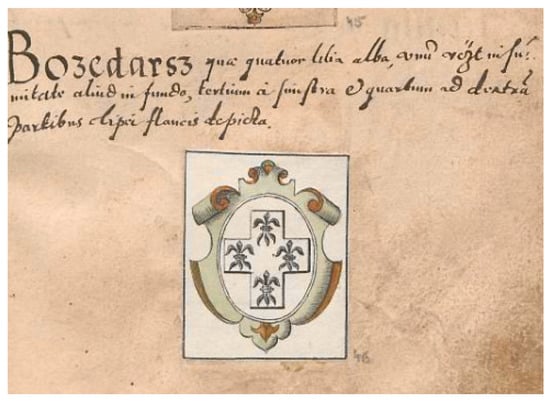
Figure 1
Open AccessArticle
Global Racialization, Class, and the Politics of Nation: Education as a Site of Racial Formation and Resistance in the United States, South Korea, and Iran
by
Yaereem Lee, Haniyeh Kheirkhah, Hannah Stohry and Brittany Aronson
Genealogy 2025, 9(4), 150; https://doi.org/10.3390/genealogy9040150 - 11 Dec 2025
Abstract
This study examines the applicability of Critical Race Theory (CRT) beyond its U.S. American origins by analyzing the intersections of state, nation, race, and education in two distinct sociopolitical contexts: South Korea, and Iran. This manuscript explores how education functions as a genealogical
[...] Read more.
This study examines the applicability of Critical Race Theory (CRT) beyond its U.S. American origins by analyzing the intersections of state, nation, race, and education in two distinct sociopolitical contexts: South Korea, and Iran. This manuscript explores how education functions as a genealogical site of power mediating relations among the state, nation, race/ethnicity, and social class in the construction and contestation of national identity. In South Korea, historical and contemporary student movements, from anti-colonial struggles and democratization to the Sewol Ferry protests, illustrate how education has served both as a means for producing normative citizens and as a site for cultivating democratic participants through civic resistance. In Iran, educational institutions intersect with gender, ethnicity, and political authority; within a tightly centralized system, CRT and intersectionality illuminate both possibilities and constraints of critical engagement. By situating these two cases within global debates on racialization, class inequality, and nationalism, this paper contributes to a comparative understanding of education as a contested arena where nations are imagined, challenged, and reconfigured. It contributes to scholarship at the intersection of race, class, and nationalism by offering insights into how the state structures and civic actors co-construct the politics of national identity through education in the 21st century while also highlighting the role of racial experiences in these processes.
Full article
(This article belongs to the Special Issue Global Racialization, Class and the Politics of Nation: Tensions and Articulations in the Twenty-First Century)
Open AccessArticle
The Great Collusion: Analysis of Conspiracy Theories in Official Speeches of Pro-Bolsonaro Brazilian Federal Representatives (2019–2024)
by
Allan Novaes and Diogo Macedo de Novaes
Genealogy 2025, 9(4), 149; https://doi.org/10.3390/genealogy9040149 - 9 Dec 2025
Abstract
This study analyzes the political speeches of Brazilian federal representatives from the Liberal Party (PL), the primary platform for Bolsonarism, to identify patterns and features of conspiracy theories. Two core concepts are used: conspiracy theories as a worldview that addresses unpredictability and complexity
[...] Read more.
This study analyzes the political speeches of Brazilian federal representatives from the Liberal Party (PL), the primary platform for Bolsonarism, to identify patterns and features of conspiracy theories. Two core concepts are used: conspiracy theories as a worldview that addresses unpredictability and complexity of life in contemporary society, and Bolsonarism as a fundamentally conspiracist worldview grounded in reactionary authoritarianism and populism. Analyzing speeches delivered between 2019 and 2024, our inductive methodology identified both epistemological (logic) and narrative (rhetoric) elements. These individual elements organically integrated to form a pervasive, overarching conspiracy theory that we term “The Grand Collusion”. This theory was strategically deployed to support electoral campaigns and structure political opposition to the Lula government. “The Grand Collusion” alleges a vast alliance between the top echelons of the Judiciary (led by STF Minister Alexandre de Moraes) and the Brazilian Left (led by Lula), with assistance from major media and multilateral organizations. Its alleged objectives include rigging the 2022 elections and orchestrating the systematic persecution and censorship of Right-wing politicians and conservative citizens.
Full article
(This article belongs to the Special Issue Conspiracy Theories: Genealogies and Political Uses)
►▼
Show Figures

Figure 1
Open AccessArticle
Decolonizing Patriarchy in East Africa: Insights from Two African Women Theologians (Teresia Hinga and Nasimiyu Wasike)
by
Loreen Maseno and Sophia Chirongoma
Genealogy 2025, 9(4), 148; https://doi.org/10.3390/genealogy9040148 - 8 Dec 2025
Abstract
Drawing insights from the work of two East African women theologians, Teresia Hinga and Nasimiyu Wasike, this article foregrounds how African women theologians are a formidable force in decolonizing patriarchy. Adopting a literature review approach, the article examines some of the literature produced
[...] Read more.
Drawing insights from the work of two East African women theologians, Teresia Hinga and Nasimiyu Wasike, this article foregrounds how African women theologians are a formidable force in decolonizing patriarchy. Adopting a literature review approach, the article examines some of the literature produced by Hinga and Wasike, revealing how far they have gone in terms of breaking the thick walls of patriarchy which were fortified by Christianity, colonialism and modernity. In unison with these two giant East African women theologians, the article beckons all African women to resist the patriarchal injustices on their doorsteps. It raises a clarion call for them to reclaim their voices by refusing to be spoken for, spoken of, spoken about as if they were dead. Hence, it advocates for a resurgence of conversations around the decolonization of patriarchy. The article also suggests other possible interventions that can be implemented to enhance the attainment of gender parity.
Full article
(This article belongs to the Special Issue Decolonizing East African Genealogies of Power)
Open AccessArticle
Can Anti-Racist Civic Engagement Be Dialogic? A Dialogic Analysis of Decolonial Discourse in Belgian Higher Education
by
Hari Prasad Sacré
Genealogy 2025, 9(4), 147; https://doi.org/10.3390/genealogy9040147 - 6 Dec 2025
Abstract
Universities have become central arenas in which the terms of racial justice are negotiated, contested, and at times sanctioned. This article examines how decolonial discourse in Belgian higher education navigates the tension between dialogic and authoritative discourse. Decolonial discourse in Belgium tackles racial
[...] Read more.
Universities have become central arenas in which the terms of racial justice are negotiated, contested, and at times sanctioned. This article examines how decolonial discourse in Belgian higher education navigates the tension between dialogic and authoritative discourse. Decolonial discourse in Belgium tackles racial illiteracy or the lack of institutional capacity to engage with the histories and contemporary realities of race. The study draws on a qualitative analysis of thirteen publicly available documents, including open letters, manifestos, and institutional responses produced between 2017 and 2021, with a dialogic analysis of five key texts within the Ghent University Association. Using Bakhtin’s framework of dialogic and authoritative discourse, operationalised through Matusov and von Duyke’s concept of internally persuasive discourse (IPD), the analysis identifies three modes of responding to racial illiteracy: appeals to personal conviction (IPD1), the formulation of new institutional norms (IPD2), and dialogic inquiry that treats illiteracy as a shared pedagogical problem (IPD3). The findings show that while decolonial movements expose the structural and epistemic conditions that sustain racial illiteracy, institutional responses from students, staff, and governing bodies often address these critiques by enforcing ‘decolonial’ personal convictions and institutional norms, risking the reproduction of the very illiteracy they seek to remedy. The article concludes that decolonial transformation requires cultivating dialogic practices that position racial illiteracy as a collective site of learning within the university’s civic mission.
Full article
(This article belongs to the Special Issue Multiraciality and Social Mobility: Challenges Faced by Racialised Citizenship Across Europe)
►▼
Show Figures

Figure 1
Open AccessArticle
The Enforced Silence: Gaza and the Scholasticide of Palestinian Academics—Parallels, Provocations, and Pathways for Action
by
Syra Shakir, Fadoua Govaerts and Penny Rabiger
Genealogy 2025, 9(4), 146; https://doi.org/10.3390/genealogy9040146 - 4 Dec 2025
Abstract
This article interrogates “enforced silence” in higher education as an active, racialised technology of governance that manages speech, polices dissent, and narrows the horizons of legitimate knowledge. Bringing scholarship on institutional racism, decoloniality, and academic freedom into dialogue with analyses of scholasticide,
[...] Read more.
This article interrogates “enforced silence” in higher education as an active, racialised technology of governance that manages speech, polices dissent, and narrows the horizons of legitimate knowledge. Bringing scholarship on institutional racism, decoloniality, and academic freedom into dialogue with analyses of scholasticide, the systematic destruction of education and intellectual life in Palestine, the paper argues that neutrality and professionalism function as administrative veneers that protect institutional reputation while disciplining racialised scholars and erasing Palestinian epistemologies. Palestine operates here as both an acute site of violence and a diagnostic mirror that illuminates a transnational repertoire of epistemic governance: censorship, securitisation, campus injunctions, and weaponised definitions that chill debate and criminalise solidarity. The article extends the concept of scholasticide beyond material destruction to include ideological and institutional assaults on dissent and critical thought, demonstrating how marketised, securitised universities reproduce racial regimes while disavowing complicity. Against this architecture, the paper advances a praxis-oriented framework drawing on critical pedagogy and the Palestinian ethic of Sumud to envision universities as sites of freedom rather than corporate neutrality. It sets out concrete strategies for scholars and institutions, including protections for dissent, refusal of censorious definitions, divestment from complicit partnerships, cross-border classrooms, and recognition of emotional–political labour, to convert witness into transformative action. The article concludes by insisting that academic responsibility is irreducibly collective: education must commit to liberation, not serve domination.
Full article
(This article belongs to the Special Issue Global Racialization, Class and the Politics of Nation: Tensions and Articulations in the Twenty-First Century)
Open AccessArticle
Generation One: White Children on First Nations/Aboriginal Country in Nineteenth-Century Australia
by
Paula Jane Byrne
Genealogy 2025, 9(4), 145; https://doi.org/10.3390/genealogy9040145 - 4 Dec 2025
Abstract
►▼
Show Figures
The first generation of non-Aboriginal children born into the First Nations/Aboriginal country had their own relationship to colonising. For them, Aboriginal people were negotiated as part of play. The children escaped the strictures of work or classroom to spend time at the Aboriginal
[...] Read more.
The first generation of non-Aboriginal children born into the First Nations/Aboriginal country had their own relationship to colonising. For them, Aboriginal people were negotiated as part of play. The children escaped the strictures of work or classroom to spend time at the Aboriginal camps located near the homesteads, or to indicate Aboriginal presence on the stations. The locating of First Nations/Aboriginal people as part of play had an influence on the way non-Aboriginal people related to Aboriginal people and politics in Australian history.
Full article
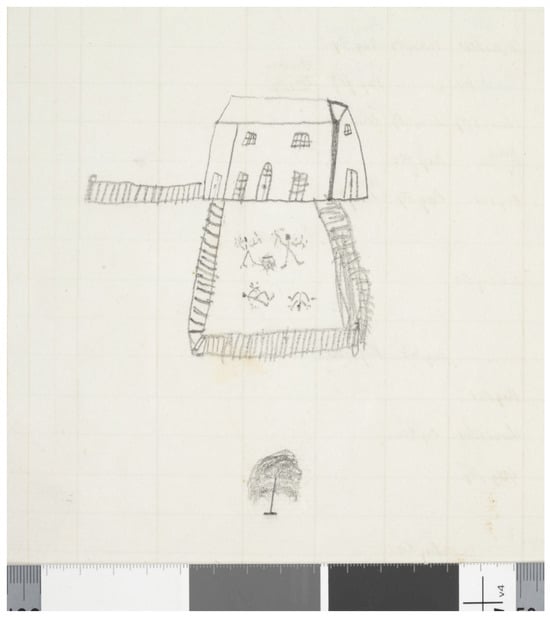
Figure 1
Open AccessArticle
Global Tensions and Articulations in the Twenty-First Century Politics, and the Need to Reconceptualise Citizenship Education
by
Charste C. Wolhuter, Johannes Lodewicus (Hannes) Van der Walt and Nico A. Broer
Genealogy 2025, 9(4), 144; https://doi.org/10.3390/genealogy9040144 - 4 Dec 2025
Abstract
It seems, three decades into the twenty-first century, as if the interrelated trends of deglobalization, regressive nationalism, populism, and identity politics are gaining traction worldwide, thereby embodying inclinations that seem to be the opposite of those in preceding decades. Citizenship Education, both as
[...] Read more.
It seems, three decades into the twenty-first century, as if the interrelated trends of deglobalization, regressive nationalism, populism, and identity politics are gaining traction worldwide, thereby embodying inclinations that seem to be the opposite of those in preceding decades. Citizenship Education, both as a broad academic discipline and as a school subject, appears to be a suitable vehicle for addressing and even countering these new global trends, if and when required. The first part of this paper surveys and assesses the aforementioned global political trends that are currently unfolding. This is followed by considering whether these trends can be countered by citizenship as a broad academic discipline, and by Citizenship Education as a subject taught in schools. The historical evolution and present state of citizenship education are reconstructed and assessed. The article concludes with arguments aimed at reconceptualising Citizenship Education as a school subject capable of successfully countering current political trends, if required.
Full article
(This article belongs to the Special Issue Global Racialization, Class and the Politics of Nation: Tensions and Articulations in the Twenty-First Century)
Open AccessArticle
White South African Refugee Claims to Marginalisation: A Case of Re-Racialisation
by
Suriamurthee Moonsamy Maistry
Genealogy 2025, 9(4), 143; https://doi.org/10.3390/genealogy9040143 - 2 Dec 2025
Abstract
South Africa has relatively recently transitioned from a condition of legislated racial stratification to a democracy in which all South Africans now enjoy political enfranchisement. While political emancipation has been achieved, economic and social emancipation remain elusive for the majority of Black South
[...] Read more.
South Africa has relatively recently transitioned from a condition of legislated racial stratification to a democracy in which all South Africans now enjoy political enfranchisement. While political emancipation has been achieved, economic and social emancipation remain elusive for the majority of Black South Africans who still bear the brunt of poverty and deprivation. South Africa’s white colonial communities, having relinquished political power, continue to retain and enjoy economic and social class privileges. Despite state-driven social cohesion and nation-building initiatives, the envisaged ‘rainbow nation’ (a metaphor coined by the late Archbishop Desmond Tutu) is becoming an increasingly fragile social aspiration. Historical legacies, especially regarding white affirmation, wealth accumulation, and the imperative for economic redistribution and land reform, have become key flashpoints in contemporary South Africa. This paper addresses the issue of how South Africa’s corrective justice and affirmative action policies are re-racialised into narratives of reverse racism, white persecution, and white genocide. It examines how racial arbitrage works where whiteness is systematically re-racialised and traded for its value in a different country context. It examines how disillusioned white South Africans leverage white racial and class privilege for transnational mobility and protections, white settler-colonial receptivity and white nationhood. It draws attention to the tensions and contradictions in global asylum regimes, illuminating transnational networks of privilege and economic superpower coercion.
Full article
(This article belongs to the Special Issue Global Racialization, Class and the Politics of Nation: Tensions and Articulations in the Twenty-First Century)
Open AccessArticle
More than Maids: Social Mobility Experiences Among Ethiopian Women Migrating to the United Arab Emirates
by
Meron Zeleke Eresso and Ninna Nyberg Sørensen
Genealogy 2025, 9(4), 142; https://doi.org/10.3390/genealogy9040142 - 1 Dec 2025
Abstract
The migration of Ethiopian women to the Middle East has primarily been studied in connection with domestic labour and the related vulnerabilities. Due to assumptions about the low educational levels of women entering this sector, as well as the precarity and temporality the
[...] Read more.
The migration of Ethiopian women to the Middle East has primarily been studied in connection with domestic labour and the related vulnerabilities. Due to assumptions about the low educational levels of women entering this sector, as well as the precarity and temporality the sector entails, opportunities for social mobility have been largely overlooked. This article examines changes in Ethiopian women’s labour market participation in the United Arab Emirates (UAE). It demonstrates that, over time, women who enter the workforce as maids may transition into better-paid work or establish their own business ventures. It further depicts an evolving pattern of well-educated Ethiopian women entering the skilled labour market. Based on ethnographic findings from the UAE, the article offers a critical re-engagement with prevailing narratives of victimhood and severely restricted social mobility opportunities. Drawing on recent conceptualisations of mobilities, trajectories, and temporalities, the article critiques the tendency to portray Ethiopian female migrants as a homogeneous group with similar paths, thereby concealing the diversity of their experiences. Second, it questions the essentialization of women migrant workers as passive victims. By highlighting developments in women’s aspirations and agency over time, the article contributes new knowledge on the potential for social mobility within transnational labour markets.
Full article
Open AccessArticle
A Model of Spaces and Access in the Construction of Asian and Asian American Identities: “Blood Only Takes You So Far”
by
Chadrhyn A. A. Pedraza
Genealogy 2025, 9(4), 141; https://doi.org/10.3390/genealogy9040141 - 1 Dec 2025
Abstract
The lack of research on Asian and Asian American students attending Hispanic-Serving Institutions (HSIs) in the Southwest U.S. leaves this population vulnerable to marginalization by educational leaders who are not adequately prepared to support their unique needs. Considered both a numerical and racialized
[...] Read more.
The lack of research on Asian and Asian American students attending Hispanic-Serving Institutions (HSIs) in the Southwest U.S. leaves this population vulnerable to marginalization by educational leaders who are not adequately prepared to support their unique needs. Considered both a numerical and racialized community in HSIs in addition to their position as the model minority, this study aimed to examine how navigating a predominantly Hispanic context shaped participants’ understanding and construction of the Asian/Asian American identity. Using a constructivist grounded theory approach, the study developed a model suggesting that Asian and Asian American students construct their identities through three interconnected spaces: expressions of Asian culture, relationships with other Asians, and physical features associated with Asian identities. Key findings include: participants’ navigation and negotiation of externally created narratives; personal interpretations of what it means to be Asian; the role of interactions within the HSI environment in shaping participants’ Asian identity construction; the consideration of access to identity spaces in participants’ personal interest, investment, and salience; and the contributions of cultural, relational, and racial spaces to identity construction.
Full article
(This article belongs to the Special Issue Identity in Flux: Intercultural Conflict and the Dynamics of Belonging)
►▼
Show Figures

Figure 1
Open AccessArticle
Constitution, Policy and Religion: Theorizing Non-Economic Dimension of Exploitation in Religious Minorities
by
Shahzad Farid, Muhammad Fareed, Majid Raza and Ahmad Faizuddin
Genealogy 2025, 9(4), 140; https://doi.org/10.3390/genealogy9040140 - 1 Dec 2025
Abstract
►▼
Show Figures
This study developed a model of non-economic exploitation using Marxian theory and Bourdieusian methods. A survey of 275 respondents from Hindu, Sikh, and Christian minorities in Pakistan assessed religious, cultural, and social exploitation. Using CB-SEM, findings revealed unequal distribution of structural resources, with
[...] Read more.
This study developed a model of non-economic exploitation using Marxian theory and Bourdieusian methods. A survey of 275 respondents from Hindu, Sikh, and Christian minorities in Pakistan assessed religious, cultural, and social exploitation. Using CB-SEM, findings revealed unequal distribution of structural resources, with minorities having fewer than the majority. Religious, cultural, and social exploitation were significantly related (p < 0.05), with religious exploitation being the strongest predictor of the others. The study concludes that minority–majority (MM) relations are exploitative in non-economic terms, prompting minority resistance. Future research should evaluate the impact of exploitation and the extent of minority responses.
Full article
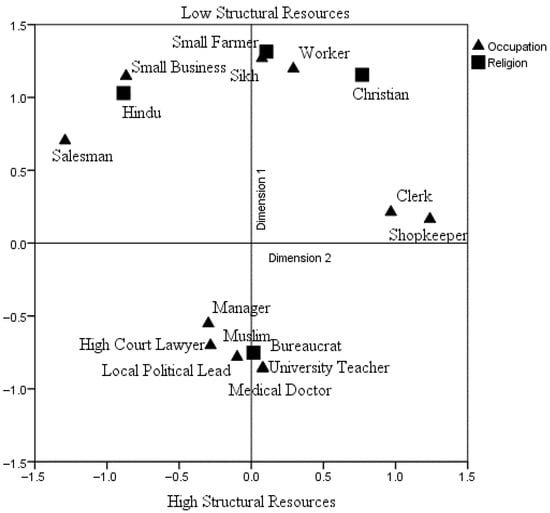
Figure 1
Open AccessArticle
Raising Children the Yörük Way: Traditional Practices and the Pressures of Modernization in Türkiye
by
Özcan Palavan, Zeynep S. Uçaral, Ahmet Güneyli and Şeniz Şensoy
Genealogy 2025, 9(4), 139; https://doi.org/10.3390/genealogy9040139 - 1 Dec 2025
Abstract
Background: This study examines how the Yörük community in Türkiye balances the preservation of traditional childrearing practices with modernization and compulsory schooling. Context: The Yörüks, a historically nomadic Turkic people, possess a distinct cultural identity that centres around oral knowledge transmission, family-based education,
[...] Read more.
Background: This study examines how the Yörük community in Türkiye balances the preservation of traditional childrearing practices with modernization and compulsory schooling. Context: The Yörüks, a historically nomadic Turkic people, possess a distinct cultural identity that centres around oral knowledge transmission, family-based education, and pastoral living. Methods: A qualitative phenomenological approach was used. Data Collection: In-depth semi-structured interviews were conducted with 11 Yörük participants selected through purposive sampling. Results: Four core themes were identified: Yörük culture, expectations of children, childrearing practices, and perceptions of schooling. Tensions emerge between traditional responsibilities, gender roles, and modern schooling structures. Conclusions: The study shows that cultural dissonance with the national education system contributes to educational exclusion and identity tension among Yörük children. Theoretical Implications: This study challenges dominant educational paradigms that overlook minority epistemologies and underscores the need to incorporate pastoralist worldviews into inclusive education theory. Practical Implications: It calls for flexible, culturally responsive policies, such as mobile or seasonal schooling and culturally inclusive curricula. Research Implications: Future studies could focus on the longitudinal impacts of modernization on the educational outcomes of pastoral communities or conduct comparative studies with other nomadic groups.
Full article
Open AccessArticle
Kinship as Evidence: Genealogy, Law, and the Politics of Recognition
by
Oluwaseyi B. Ayeni, Oluwajuwon M. Omigbodun and Oluwakemi T. Onibalusi
Genealogy 2025, 9(4), 138; https://doi.org/10.3390/genealogy9040138 - 1 Dec 2025
Abstract
►▼
Show Figures
Genealogy has shifted from the private domain of family history to a central mechanism in law and governance. This article examines how genealogical claims are used as evidence in three critical domains: citizenship, inheritance, and indigenous recognition. Using a comparative socio-legal approach, the
[...] Read more.
Genealogy has shifted from the private domain of family history to a central mechanism in law and governance. This article examines how genealogical claims are used as evidence in three critical domains: citizenship, inheritance, and indigenous recognition. Using a comparative socio-legal approach, the study analyses statutes, case law, and interdisciplinary scholarship to reveal both convergences and divergences in evidentiary practice. Across legal systems, descent remains decisive in allocating rights and recognition, yet the hierarchy of proof varies. Civil law states privilege documentary records, common law courts increasingly rely on DNA testing, and indigenous forums continue to give authority to oral genealogies. The rapid growth of genetic genealogy databases adds new complexity. While these technologies expand opportunities for verification, they also create ethical challenges concerning privacy, consent, and the extension of genealogical data into surveillance. To address these dynamics, the article develops an evidence regime framework that treats genealogy as criteria of proof, media of proof, institutional gatekeepers, and social consequences. The findings highlight genealogy’s dual character: it enables claims to rights yet also reproduces exclusion when evidentiary hierarchies are imposed. The article argues for pluralist standards that respect documentary, genetic, and oral genealogies, offering a pathway toward more inclusive and just legal recognition.
Full article
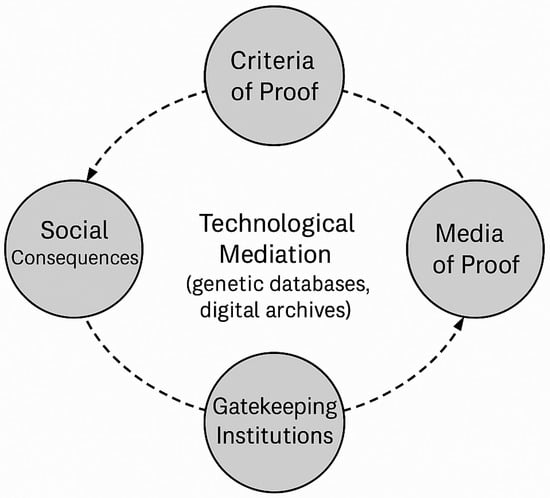
Figure 1
Open AccessArticle
Social Support or Social Networks? The Association Between Social Resources and Depression Among Central American Immigrants in the United States
by
Andrea G. Pérez Portillo, Nidia Hernández and Xochilt Alamillo
Genealogy 2025, 9(4), 137; https://doi.org/10.3390/genealogy9040137 - 1 Dec 2025
Abstract
Social connections and social support have shown strong associations with mental health within immigrant populations. This study examines the nuances in the associations between social network measures and perceived interpersonal support on depression among immigrants from Central America residing in the United States.
[...] Read more.
Social connections and social support have shown strong associations with mental health within immigrant populations. This study examines the nuances in the associations between social network measures and perceived interpersonal support on depression among immigrants from Central America residing in the United States. Data for this project came from the 2012–2013 wave of the National Epidemiological Survey on Alcohol and Related Conditions (NESARC-III). In determining the association between lifetime depression and perceived interpersonal support, three social network measures (diversity, domain participation, and count) were assessed through a series of logistic regressions that controlled for demographic characteristics. Linear regressions were used to assess the relationship between perceived interpersonal support and network characteristics. Immigrants who had higher levels of perceived support had lower odds of meeting the criteria for depression. Social network measures were not significant in their association with depression; however, supplemental analyses indicated a strong relationship between network characteristics and perceived interpersonal support. Future research is needed to further elucidate the mechanisms of the social resources that contribute to immigrant health across peoples’ lifespans.
Full article
(This article belongs to the Special Issue The Impact of Social Connectedness and Cultural Adaptation on Mental Health)
►▼
Show Figures

Figure 1
Open AccessReview
Indigenous Consumer Racial Profiling in Canada: A Neglected Human Rights Issue
by
Lorne Preston Foster and Lesley Allan Jacobs
Genealogy 2025, 9(4), 136; https://doi.org/10.3390/genealogy9040136 - 1 Dec 2025
Abstract
This paper examines the pervasive yet underrecognized phenomenon of consumer racial profiling (CRP) against Indigenous peoples in Canada. Drawing on sociolegal analysis, public health research, and empirical data, the authors demonstrate how CRP—manifested in routine acts of surveillance, exclusion, and humiliation in retail
[...] Read more.
This paper examines the pervasive yet underrecognized phenomenon of consumer racial profiling (CRP) against Indigenous peoples in Canada. Drawing on sociolegal analysis, public health research, and empirical data, the authors demonstrate how CRP—manifested in routine acts of surveillance, exclusion, and humiliation in retail and service spaces—functions as a contemporary expression of colonialism and systemic racism. The work identifies both individual and collective harms, including racial trauma, internalized inferiority, and civic alienation, while framing CRP as a neglected but critical human rights issue. The authors argue that CRP exacerbates intergenerational trauma and undermines reconciliation efforts, calling for Indigenous-specific remedies such as healing ceremonies, cultural safety training, and systemic data collection reforms. By situating CRP within broader patterns of legal consciousness, systemic discrimination, and access to justice, this report is a much-needed foundational resource for advancing anti-racist practices in commercial settings and fulfilling Canada’s private-sector obligations under the Truth and Reconciliation Commission and the United Nations Declaration on the Rights of Indigenous Peoples (UNDRIP).
Full article
(This article belongs to the Section Genealogical Communities: Multi-Ethnic, Multi-Racial, and Multi-National Genealogies)
Open AccessArticle
Investigating the Investigators: Moral Panic, Mixed-Race Families and Their Vilification in Interwar Britain
by
Lucy Bland and Chamion Caballero
Genealogy 2025, 9(4), 135; https://doi.org/10.3390/genealogy9040135 - 21 Nov 2025
Abstract
This paper investigates the investigators behind the distinct ‘moral panic’ that targeted mixed-race families residing in Britain’s multiracial port communities during the interwar period. This period witnessed heightened social anxieties following the First World War, exacerbated by the economic downturn and the visible
[...] Read more.
This paper investigates the investigators behind the distinct ‘moral panic’ that targeted mixed-race families residing in Britain’s multiracial port communities during the interwar period. This period witnessed heightened social anxieties following the First World War, exacerbated by the economic downturn and the visible presence of multiracial populations, a consequence of wartime labour demands. The 1919–1920 ‘race riots’, erupting in various British port cities, served as a critical catalyst in the exposure of underlying racial prejudices and anxieties surrounding interracial relationships and mixed-race children. In our paper we explore how the ensuing ‘moral panic’ was not simply a spontaneous societal reaction fuelled by sensationalist and prejudiced reporting in the press, but was actively constructed and sustained through a confluence of official investigations and the actions of key individuals within government and society. These forces collectively contributed to a pathological legacy that profoundly impacted the treatment and perception of mixed-race families in Britain well beyond the interwar years. Our paper builds upon our collaborative work with Peter Aspinall, to whom this paper is dedicated as one of his last scholarly endeavours.
Full article
(This article belongs to the Special Issue Seeing Ethnicity Otherwise: From History, Classification and Terminology to Identities, Health and Mixedness in the Work of Peter J. Aspinall)
Open AccessArticle
Navigating Identity: Citizenship and the Reality of the Second Generation of Albanian Origin in Greece
by
Georgia Spyropoulou and Ilirida Musaraj
Genealogy 2025, 9(4), 134; https://doi.org/10.3390/genealogy9040134 - 19 Nov 2025
Abstract
This article focuses on one critical factor among the many influencing identity formation in the second generation of Albanian origin in Greece: the acquisition of citizenship. Citizenship is more than a legal status; it serves as a fundamental marker of belonging, shaping access
[...] Read more.
This article focuses on one critical factor among the many influencing identity formation in the second generation of Albanian origin in Greece: the acquisition of citizenship. Citizenship is more than a legal status; it serves as a fundamental marker of belonging, shaping access to rights, social mobility, and political participation. Despite the 2015 Greek citizenship law aiming to facilitate naturalization, many second-generation Albanians still face bureaucratic obstacles, and prolonged legal uncertainty. These barriers create a sense of social exclusion by limiting opportunities in education and employment and depriving them the right of political participation. Navigating these challenges forces individuals to negotiate their identity in complex ways. Some emphasize Greek identity, others adopt a hybrid identity, yet others reinforce Albanian self-identification. Broader societal attitudes, including stereotypes and discrimination, further shape these identity strategies. These strategies are furthermore influenced by the individuals’ life trajectories, which can either reinforce a sense of otherness or counteract it. Through in-depth interviews, this qualitative study argues that citizenship constitutes a crucial determinant of cultural and/or national belonging for some people, as it produces practical and symbolic conditions of inclusion or exclusion. Ultimately, Greek citizenship functions not just as an institutional gatekeeper but as a broader social force that shapes an individuals’ identity and sense of belonging within Greek society.
Full article
(This article belongs to the Special Issue Identity in Flux: Intercultural Conflict and the Dynamics of Belonging)
Highly Accessed Articles
Latest Books
E-Mail Alert
News
Topics
Topic in
Arts, Genealogy, Histories, Philosophies, Religions
Reimagining Totemism: Mystical Experience, Life Values, and Contemporary Art Practices
Topic Editors: Zhilong Yan, Lidija Stojanović, Aixin ZhangDeadline: 31 October 2026

Special Issues
Special Issue in
Genealogy
Conspiracy Theories: Genealogies and Political Uses
Guest Editor: Marco SolinasDeadline: 15 January 2026
Special Issue in
Genealogy
Holding Up the Flag: Contributions of US Civil War Colored Troops and Their Descendents in the Struggle for Civil and Human Rights
Guest Editors: Walter Allen, Frank Smith, Dawn ChittyDeadline: 15 January 2026
Special Issue in
Genealogy
Secularism, Multiculturalism and Race–Religion Entanglements
Guest Editors: A. Sophie Lauwers, Anya TopolskiDeadline: 16 January 2026
Special Issue in
Genealogy
Body–Land Relationships
Guest Editors: Isabel Altamirano-Jimenez, Shirley Anne TateDeadline: 15 February 2026








